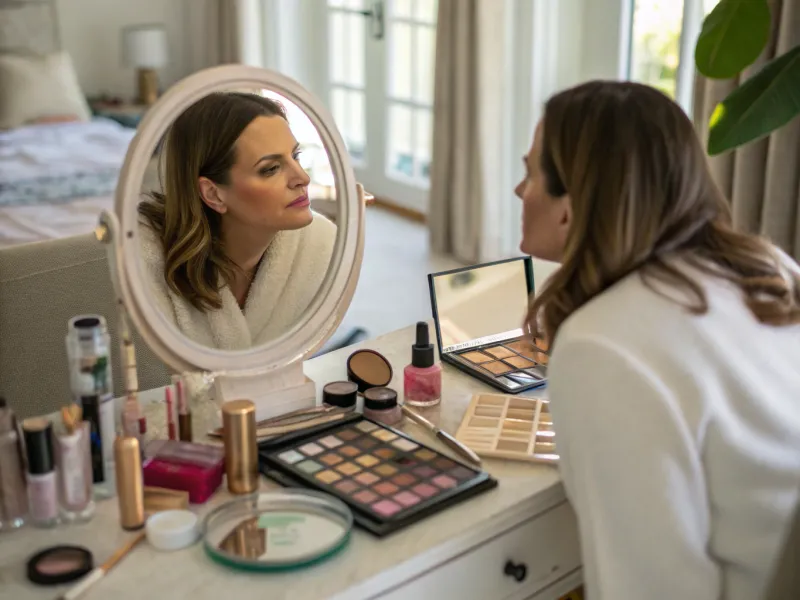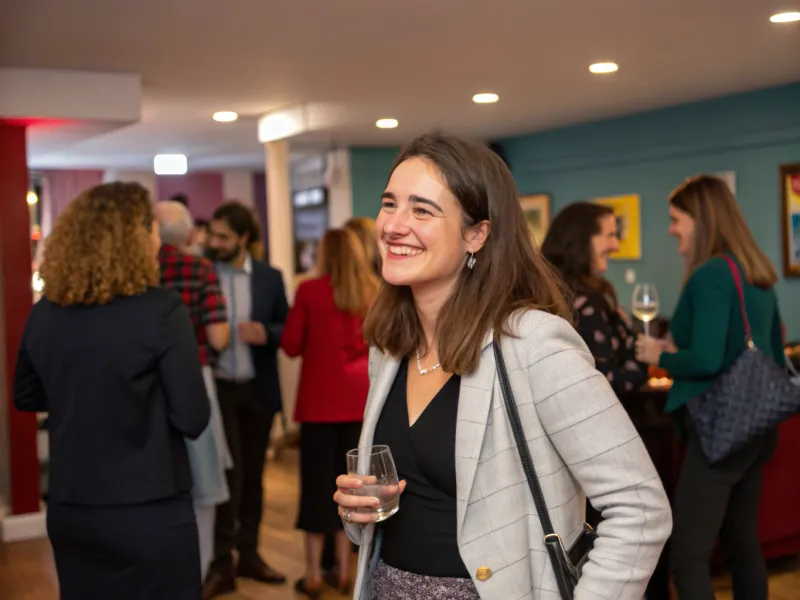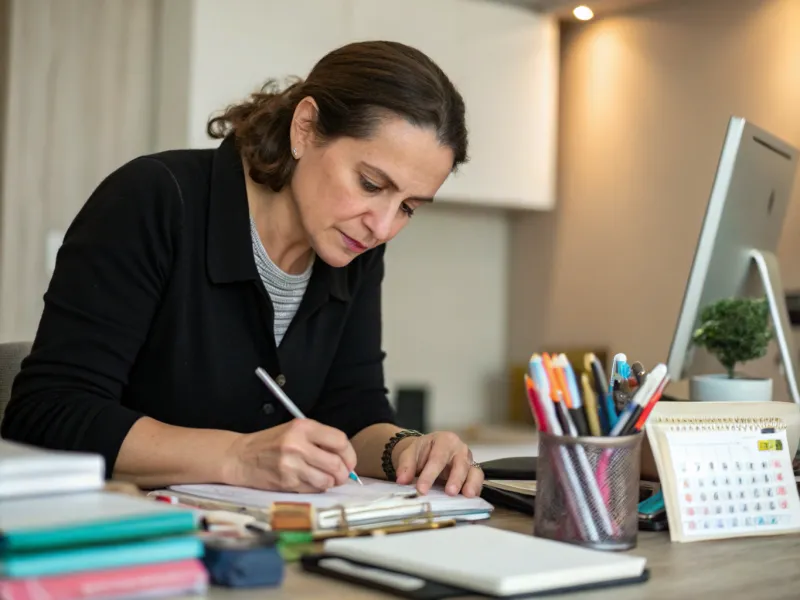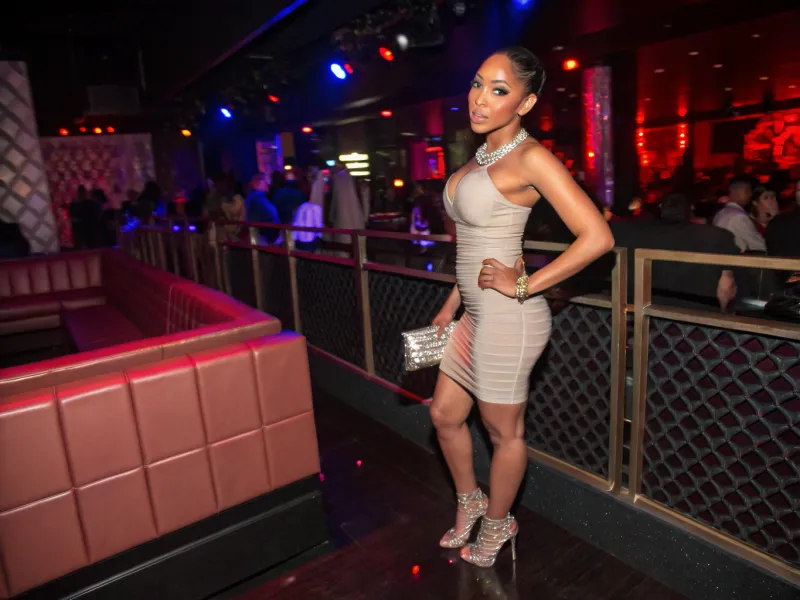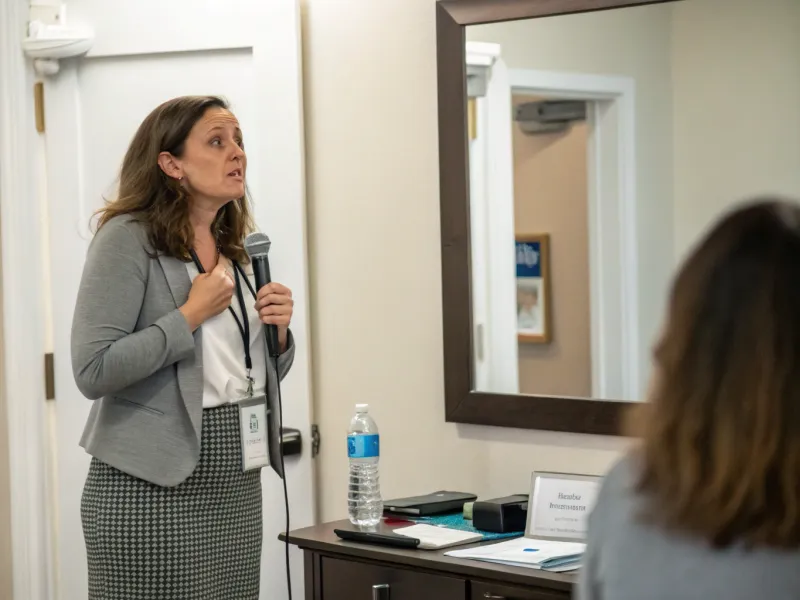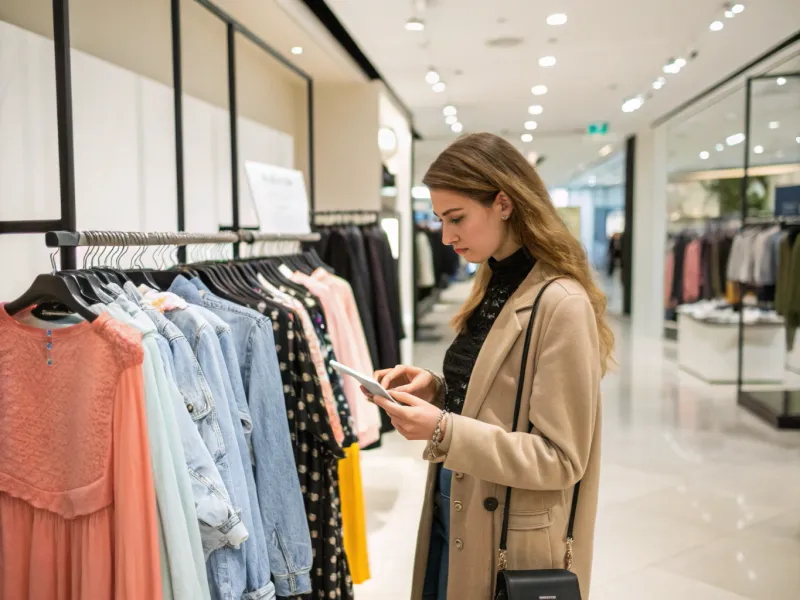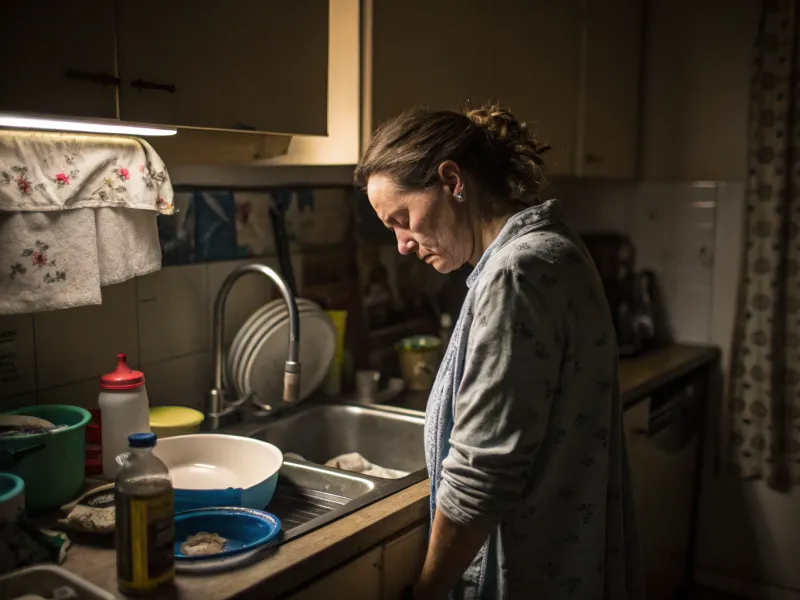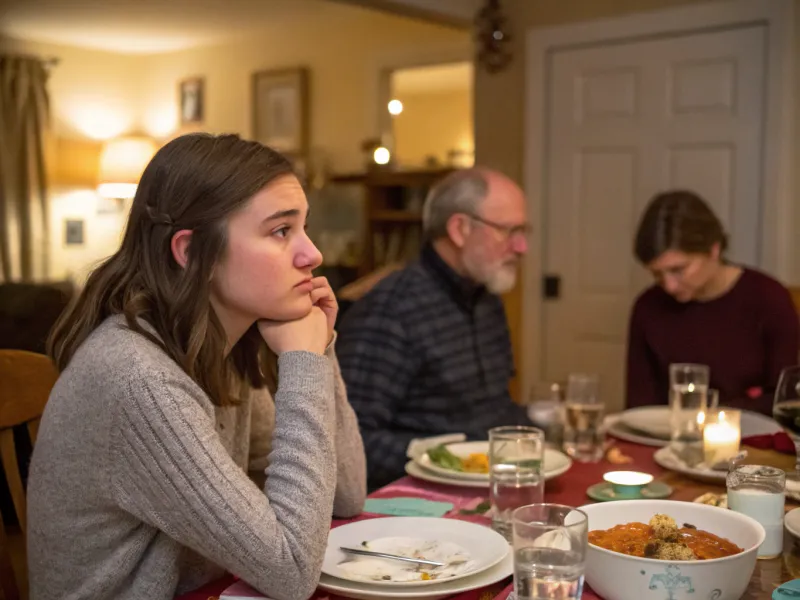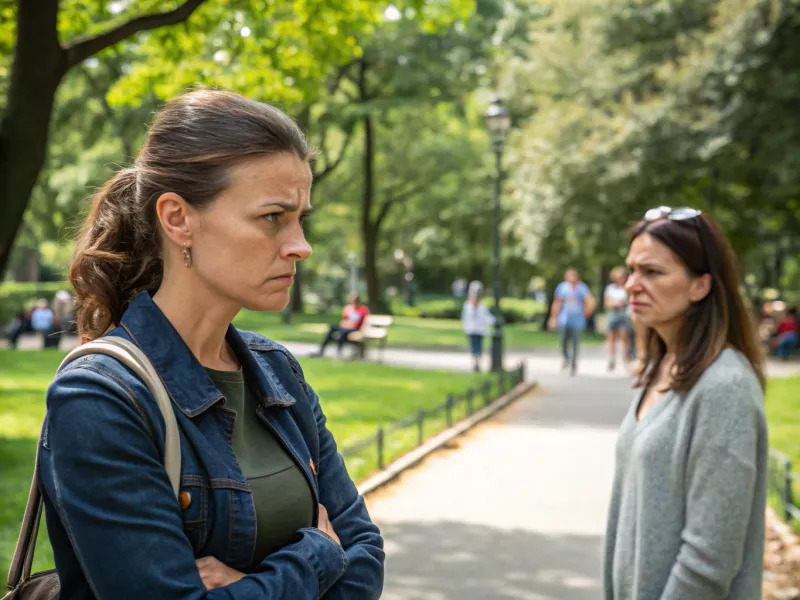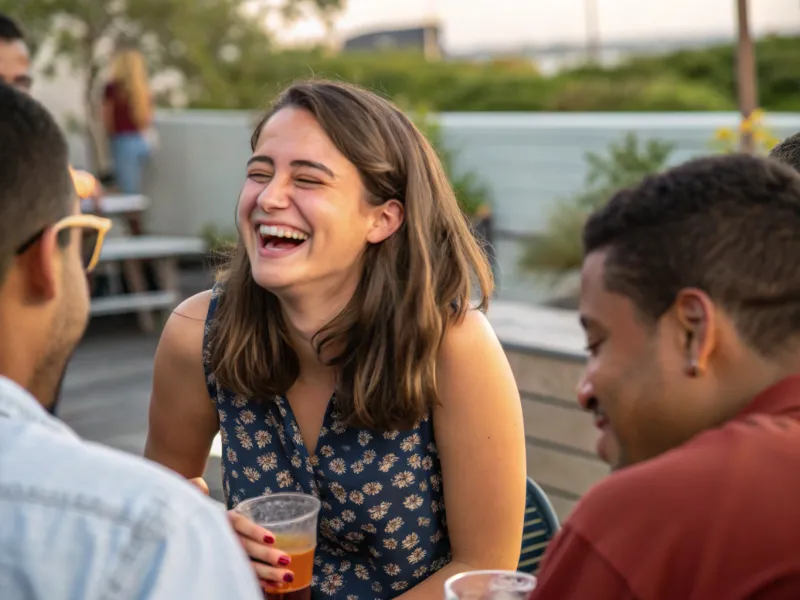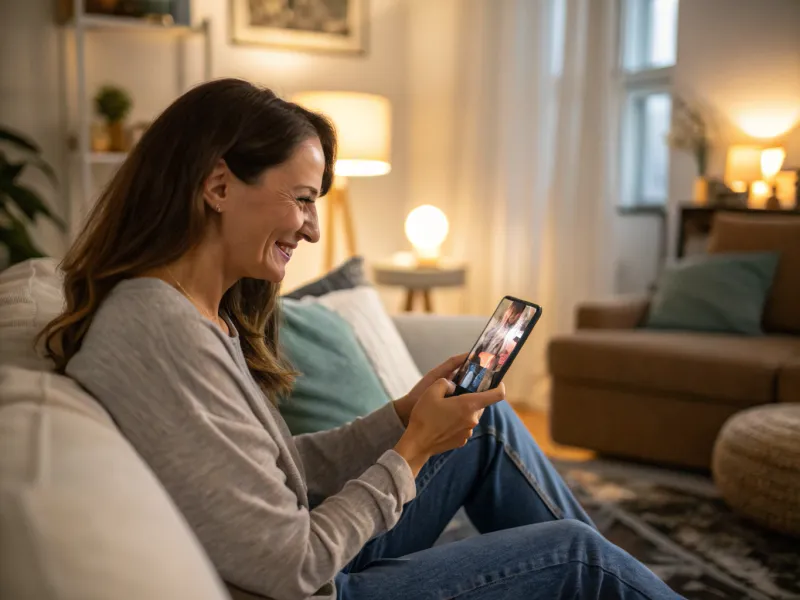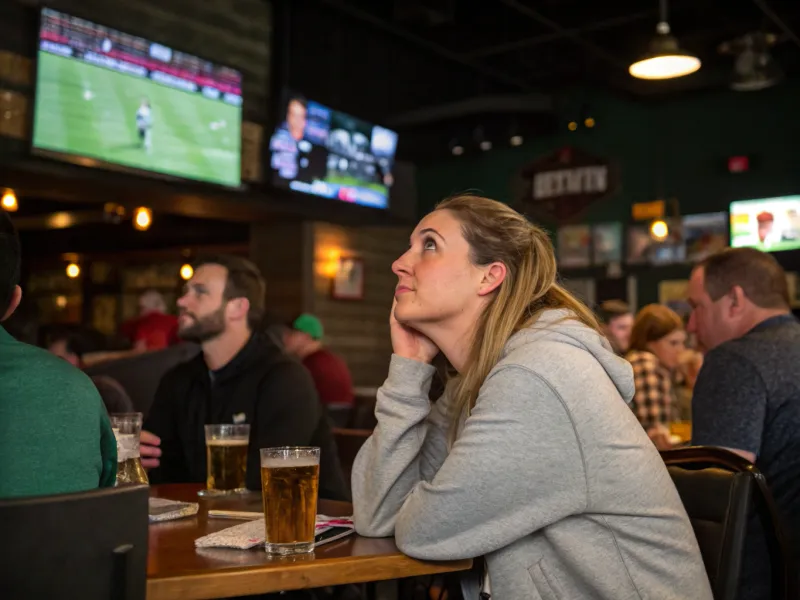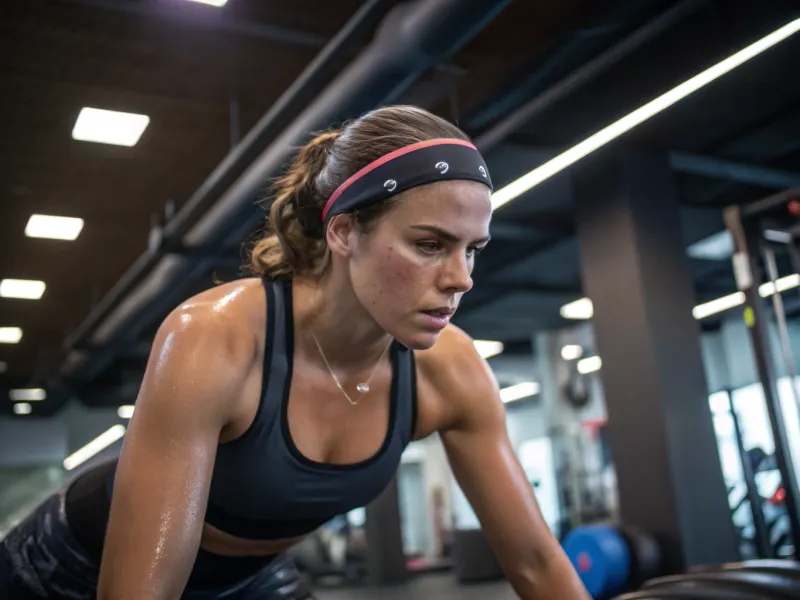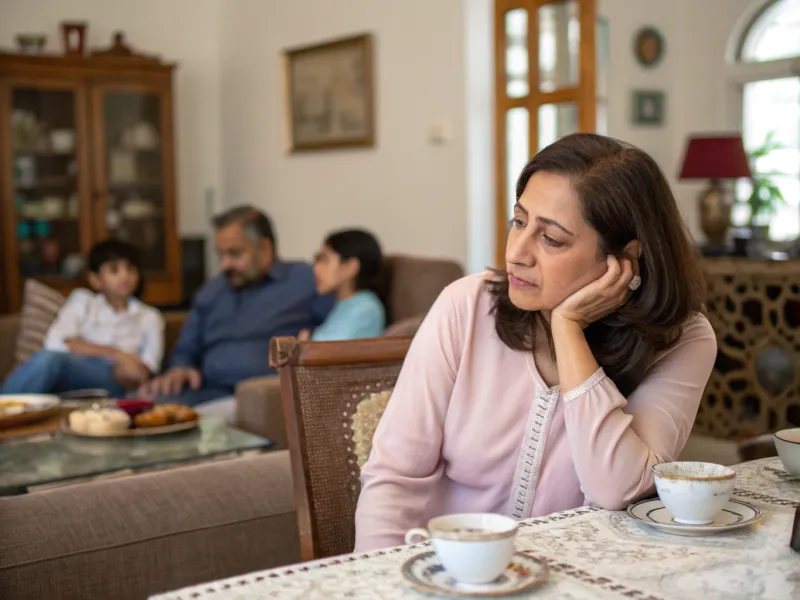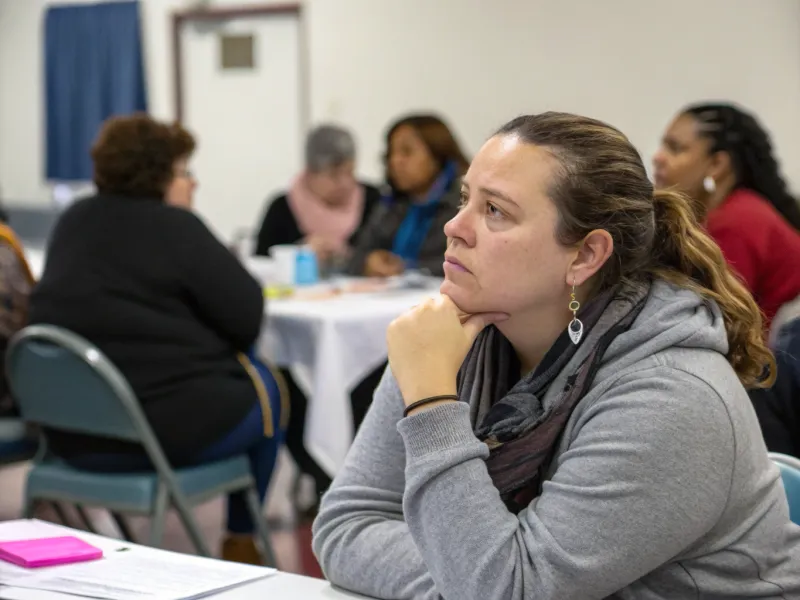In the seemingly endless quest for equality, many women find themselves grappling with the invisible chains of internalized misogyny. It’s a subtle, yet potent force that shapes beliefs, actions, and feelings often without conscious awareness.
Here, we delve into the stories of thirty-five women who candidly share their experiences with internalized misogyny. These narratives reveal the surprising, sometimes shocking ways in which societal norms and biases are ingrained in personal identities and behaviors.
Through humor, candidness, and raw emotion, each story unfolds a unique perspective, inviting you to reflect on your own encounters with these hidden biases.
1. The Over-Apologizer
Julie, a spirited 28-year-old marketing professional, realized her tendency to over-apologize was rooted in internalized misogyny. She often found herself saying ‘sorry’ in situations where an apology wasn’t necessary. It dawned on her during a team meeting when she apologized for speaking up before anyone else did. Her male colleagues never seemed to apologize for such things, so why did she?
This realization hit hard, sparking a journey of introspection. She’d been conditioned to believe her voice was less important, that taking up space required constant apologizing. Determined to change, she now consciously practices speaking without unnecessary apologies.
Her advice to others is simple: reflect on your language habits. Are you apologizing for things others wouldn’t? It’s time to reclaim your voice and speak confidently. Breaking free from this pattern has empowered Julie, reinforcing her belief that her contributions are valuable and necessary. It’s a small change that has made a significant impact on her professional and personal life.
2. The Beauty Critic
Carla, at 35, found herself constantly critiquing her own appearance. It wasn’t just about wanting to look good; it was a relentless self-criticism fueled by internalized misogyny. She’d spend hours in front of the mirror, pinpointing flaws no one else could see, driven by the belief that her worth was tied to her looks.
The turning point came during a conversation with a friend who mentioned how societal beauty standards had affected her self-esteem. It was a wake-up call. Carla realized she’d been excessively harsh on herself, succumbing to beauty myths perpetuated by media and culture.
Determined to change, Carla started practicing self-acceptance, embracing her natural features, and focusing on inner qualities. She encourages others to question the beauty standards they hold themselves to. Her journey is ongoing, but each step towards self-love is a victory, dismantling the internalized belief that beauty equals worth.
3. The Silent Sufferer
Maria, a 42-year-old mother of three, often found herself biting her tongue during family discussions. Even when she passionately disagreed, she remained silent, a habit tied to internalized misogyny. She believed her role was to keep peace, not to stir the pot.
Her epiphany came during a heated family argument about gender roles. Staying silent felt like betraying herself and her daughters, who she hoped would be more vocal about their beliefs. It was then she realized that perpetuating silence was its own form of oppression.
Maria now consciously chooses to voice her opinions, even when it’s uncomfortable. She has become a role model for her daughters, teaching them that their voices deserve to be heard, regardless of the setting. Her message is clear: silence isn’t golden when it stifles your truth.
4. The Career Doubter
Samantha, a dedicated 30-year-old software engineer, often second-guessed her capabilities at work. Despite her stellar achievements, she frequently felt like an imposter, a feeling rooted in internalized misogyny.
The turning point was a male colleague being praised for work she’d significantly contributed to. It struck her that she diminished her own achievements, assuming she wasn’t as capable. This internal battle reflected societal messages that women must work twice as hard to prove half as much.
She began to actively challenge these thoughts by acknowledging her successes and seeking mentorship. Today, Samantha champions self-belief among her peers, reminding them that self-doubt is a thief of potential. Her story encourages women to own their accomplishments and value their professional worth. Confidence, she learned, is cultivated from within, not validated by others.
5. The People Pleaser
Emily, at 26, realized her overwhelming urge to please others stemmed from internalized misogyny. She constantly put others’ needs first, even if it meant sacrificing her own happiness. The idea that she had to be likable overshadowed her true self.
A pivotal moment came when she felt utterly exhausted after hosting a party, realizing she hadn’t enjoyed a minute of it. It was then she understood that her need to be approved by everyone was masked as kindness but was actually self-neglect.
Emily now sets boundaries and prioritizes her own needs. She shares her journey with friends, encouraging them to find balance between self-care and caring for others. Her advice is clear: your happiness should not be contingent on others’ approval. This shift has not only restored her energy but has enhanced her relationships, where authenticity has replaced forced likability.
6. The Perfectionist
Linda, a meticulous 40-year-old graphic designer, battled with perfectionism, driven by internalized misogyny. She believed any mistake would undermine her worth and capabilities.
Her breakthrough came during a therapy session where she explored the roots of her anxiety. She realized her perfectionism was a shield against judgment, a way to prove she was good enough in a world quick to scrutinize women.
She began embracing imperfections, allowing herself to take creative risks. Linda advises women to let go of the need to be perfect, to embrace their authentic selves. Her journey is a testament to the liberation found in imperfection, fostering creativity and genuine self-expression.
7. The Competitor to Other Women
Jessica, 29, always viewed other women as competition, a mindset born from internalized misogyny. Instead of allies, she saw rivals in every woman, believing there was only room for one at the top.
This belief was challenged when she joined a women’s leadership group. There, she learned the power of collaboration and mutual support. The realization that uplifting each other created a stronger community was revolutionary for her.
Jessica now actively collaborates with female colleagues, championing their achievements. She encourages others to see women as allies in a shared journey. Her story highlights the importance of unity, reminding us that breaking the cycle of competition begins with support and encouragement.
8. The Weight Watcher
At 33, Sarah’s life revolved around numbers on a scale. The internalized belief that her value was dictated by her weight was a constant burden.
Her turning point was a health scare that forced her to reassess what truly mattered. Realizing that her worth wasn’t tied to her weight, she began focusing on health and well-being instead of numbers.
She now advocates for body positivity, encouraging others to embrace their bodies irrespective of societal standards. Sarah’s journey is a reminder that self-worth transcends physical appearance, promoting a healthier, more accepting view of oneself.
9. The Emotional Suppressor
To Anna, 38, showing emotion at work was a sign of weakness, a belief deeply rooted in internalized misogyny. She prided herself on her stoicism, never letting her team see her sweat.
This changed when a colleague praised her for being ‘like one of the guys’ for her unemotional demeanor. She began to question why vulnerability was seen as a flaw rather than a strength.
Anna has since embraced her emotional side, understanding that empathy and emotional expression are powerful leadership qualities. She now encourages a work culture where emotions are valued, not suppressed, advocating for authenticity in the workplace.
10. The Femme Fatale
Chloe, 25, often felt the need to present herself as irresistibly attractive, believing it was her most powerful asset—an idea shaped by internalized misogyny.
Her revelation came during a conversation with a friend who asked if she felt truly seen or just looked at. It struck her that she was valuing herself based on others’ gaze rather than her intrinsic worth.
She is now on a path to redefine her self-worth, focusing on her intellect and passions. Chloe’s journey emphasizes embracing inner beauty and shifting focus from external validation, encouraging others to seek fulfillment beyond appearances.
11. The Submissive Partner
Rachel, at 31, realized her tendency to defer to her partner in decisions was deeply entwined with internalized misogyny. She often put her needs second, believing her partner’s desires held more weight.
This pattern was challenged during a financial planning session where her ideas were overlooked. Finding her voice felt liberating, realizing her contributions were equally important.
Rachel now advocates for equity in relationships, ensuring her voice is heard. She inspires others to engage in open dialogue, emphasizing mutual respect and shared decision-making, reinforcing that partnership should be a balanced collaboration.
12. The Reluctant Leader
Nina, a 36-year-old manager, hesitated to take on leadership roles, fearing judgment, a fear rooted in internalized misogyny. She doubted her ability to lead solely because she was a woman.
This belief was shattered when she led a successful project that garnered company-wide praise. It was a pivotal moment that challenged her self-imposed limitations.
She now embraces leadership opportunities, mentoring other women to rise to their potential. Nina believes that leadership knows no gender, encouraging women to trust their instincts and capabilities, redefining what it means to be a leader.
13. The Social Media Conformist
At 24, Kayla found herself trapped in the cycle of comparison, measuring her life against social media portrayals—a habit fueled by internalized misogyny.
Her wake-up call was a digital detox that made her realize how much she was influenced by curated perfection. It was freeing to live life beyond the screen, focusing on real experiences rather than filtered images.
Kayla now advocates for mindful social media use, urging others to curate their feeds with positive, realistic content. She fosters a community of authenticity, reminding everyone that life isn’t about likes, but genuine connections and self-acceptance.
14. The Fashion Conformist
Liz, at 27, felt an unrelenting pressure to keep up with fashion trends—an expectation rooted in internalized misogyny. Her wardrobe was a reflection of societal norms rather than personal style.
The realization hit her when she couldn’t find personal significance in her clothing choices. It was a moment of clarity; she was dressing for others, not herself.
She now embraces her unique style, prioritizing comfort and self-expression over trends. Liz encourages others to dress for themselves, fostering a sense of individuality. Her journey emphasizes the power of personal style in expressing identity and rejecting imposed norms.
15. The Marriage Validator
For 32-year-old Laura, marriage was seen as the ultimate validation of her worth—a mindset influenced by internalized misogyny.
A defining moment came when she attended a friend’s wedding and realized she was more concerned with her own societal standing than her friend’s happiness. This prompted her to question why she equated her marital status with personal success.
Laura now embraces her singlehood as a time for personal growth and fulfillment. She advocates for redefining success, encouraging others to find happiness within, rather than in societal expectations. Her story is a celebration of self-worth beyond marital status.
16. The Childbearing Pressure
Emma, 29, constantly felt pressure to become a mother, an expectation deeply rooted in internalized misogyny. She believed her worthiness was tied to motherhood.
Her perspective shifted after a candid conversation with a childfree friend who questioned these societal expectations. Emma realized the decision should be based on personal desire, not pressure.
She now advocates for personal choice in family planning, urging women to make decisions that align with their true desires. Emma’s journey is about embracing freedom of choice and dispelling the imposed narrative that womanhood equates to motherhood.
17. The Silent Protestor
Olivia, 34, often found herself at protests, yet hesitated to raise her voice—a form of internalized misogyny that valued silence over activism.
This hesitance was challenged when she realized that her quiet presence wasn’t enough to drive change. Her voice, she concluded, was a powerful tool for advocacy.
Olivia now actively participates, both vocally and physically, in causes she believes in. She inspires others to break free from silence, emphasizing that every voice adds strength to the movement. Her story is a call to action, encouraging vocal advocacy for change.
18. The Domestic Goddess
Rachel, 37, was trapped by the expectation to be a perfect homemaker, a burden born from internalized misogyny. She found herself overwhelmed, believing her worth was tied to domestic perfection.
Her breakthrough came after a candid conversation with her partner who valued her beyond household achievements. Realizing that her identity was not confined to home duties was liberating.
She now champions shared responsibilities, encouraging equitable partnerships at home. Rachel’s advice is to redefine domestic roles, fostering environments where contributions are valued equally, regardless of gender. Her journey underscores the importance of mutual respect and shared responsibilities.
19. The Compliant Daughter
Sophia, at 22, often felt pressured to conform to her family’s traditional expectations, a form of internalized misogyny that prioritized obedience over individuality.
Her turning point came when she realized she was living someone else’s dream, not her own. This epiphany occurred during a conversation with a cousin who had broken free from similar expectations.
Sophia now pursues her passions, encouraging others to prioritize their dreams over imposed ideals. Her story is one of liberation, advocating for personal growth and the courage to forge one’s own path, even against familial pressures.
20. The Critic of Emotions
Mia, 31, found herself often judging others for openly expressing emotions, a reflection of internalized misogyny that valued composure over authenticity.
Her perspective changed when a close friend thanked her for being emotionally supportive during a personal crisis. This interaction made Mia question her own biases towards emotional expression.
Today, Mia embraces vulnerability as a strength, teaching others that emotions are a natural, healthy part of life. Her story encourages acceptance and expression, fostering environments where authenticity is celebrated rather than criticized.
21. The Self-Deprecator
Hannah, at 28, had a habit of downplaying her achievements with self-deprecation, rooted in internalized misogyny.
A friend’s compliment made her realize she was dismissing her own worth. This triggered a self-reflective journey to acknowledge her talents and accomplishments.
She now practices accepting praise graciously, understanding the value of self-acknowledgment. Hannah encourages others to own their achievements, highlighting the importance of self-recognition and combating the urge to undermine one’s own accomplishments.
22. The Overburdened Helper
Lisa, 35, always took on more than she could handle, driven by internalized misogyny that equated self-worth with being indispensable.
A burnout episode forced her to reassess her priorities, realizing that constantly helping others left little room for self-care.
She now sets boundaries, prioritizing her own well-being. Lisa’s journey encourages others to balance helping with self-care, emphasizing that self-preservation is essential to genuinely supporting others. Her story advocates for boundaries as a means of preserving one’s energy and effectiveness.
23. The Unpaid Emotional Laborer
Jessica, 34, often found herself providing emotional labor without reciprocation, a role she assumed due to internalized misogyny.
A moment of clarity came when she realized her efforts were taken for granted, prompting her to seek more balanced friendships.
Jessica now encourages equitable emotional exchanges, recognizing the value of mutual support. Her message is to value one’s emotional labor, fostering relationships where support is a two-way street. Her story underscores the importance of reciprocity in nurturing healthy, balanced connections.
24. The ‘One of the Guys’
Rebecca, 29, prided herself on being ‘one of the guys’, yet this identity was rooted in internalized misogyny that dismissed feminine traits as lesser.
Her outlook shifted when a female friend admired her for embracing femininity, making her question why she suppressed certain aspects of herself.
Rebecca now embraces her multifaceted identity, encouraging others to celebrate all parts of themselves. Her journey highlights the importance of authenticity, advocating for embracing both traditionally masculine and feminine traits.
25. The Avoidant Negotiator
Sophie, 30, often avoided negotiating for her worth, a behavior influenced by internalized misogyny that discouraged assertiveness.
Her turning point came after a mentor advised her to advocate for herself, resulting in a successful salary negotiation.
She now champions assertiveness, encouraging others to negotiate confidently. Sophie’s experience underscores the importance of knowing one’s worth and the empowerment that comes from advocating for oneself.
26. The Cautious Dreamer
Alyssa, 28, often hesitated to pursue her dreams, fearing failure—a fear rooted in internalized misogyny.
She found inspiration in a friend who fearlessly chased her ambitions, encouraging Alyssa to take risks.
Alyssa now actively pursues her goals, empowering others to overcome fear of failure. Her journey is about embracing risk and potential, advocating for daring to dream and act, despite uncertainties.
27. The Polite Conversationalist
Ella, 33, often held back her opinions to maintain politeness, a tendency influenced by internalized misogyny.
This changed when a mentor encouraged her to share her insights, leading to more dynamic discussions.
She now values open dialogue, teaching others the importance of expressing ideas confidently. Ella’s story highlights the power of voice and the impact of contributing actively to conversations.
28. The Underestimated Athlete
Megan, 27, often felt underestimated in sports, a sentiment fueled by internalized misogyny that questioned women’s athletic capabilities.
A competition win validated her skills and challenged societal preconceptions.
Megan now advocates for equal recognition in sports, encouraging women to defy limitations. Her journey emphasizes resilience and the importance of challenging biases, advocating for equal opportunities in athletics.
29. The Hidden Intellectual
At 35, Alison often downplayed her intellectual capabilities, influenced by internalized misogyny that suggested intelligence was intimidating.
A conference presentation changed her perspective, showcasing her expertise and gaining admiration.
She now champions intellectual empowerment, encouraging women to showcase their knowledge. Alison’s story is about embracing intelligence and using it as a tool for empowerment and influence.
30. The Generational Conformer
Margaret, 38, struggled with conforming to generational expectations, a form of internalized misogyny that prioritized tradition over modernization.
A family discussion about gender roles prompted her to advocate for change, embracing modern values.
Margaret now inspires others to challenge outdated norms, advocating for progressive thinking. Her journey is about balancing respect for tradition with the need for change, empowering others to redefine familial roles and expectations.
31. The Invisible Contributor
Natalie, 31, often felt invisible in team settings, a reflection of internalized misogyny that undervalued her contributions.
A successful project pitch made her realize the power of asserting her ideas.
She now teaches the importance of self-advocacy, reminding others to ensure their voices are heard. Natalie’s story is a testament to the impact of visibility and the necessity of championing one’s own contributions.
32. The Reluctant Mentor
At 29, Erin hesitated to mentor others, unsure of her own value—a hesitation tied to internalized misogyny.
Encouragement from colleagues helped her see the importance of sharing her knowledge.
Erin now actively mentors, fostering a supportive community. Her journey underscores the value of passing on wisdom and the empowerment found in lifting others.
33. The Silent Advocate
Lily, 26, often remained silent during advocacy meetings, fearing backlash—a fear rooted in internalized misogyny.
Witnessing a peer bravely speak out inspired her to find her voice.
She now champions women’s rights vocally, encouraging others to advocate wholeheartedly. Lily’s story highlights the importance of active participation in advocacy, promoting equality through action.
34. The Cultural Conformist
Anna, 30, often conformed to cultural expectations, feeling pressured by internalized misogyny to maintain tradition.
A conversation with a friend who embraced cultural diversity inspired her to explore her multicultural heritage.
Anna now embraces cultural diversity, encouraging others to celebrate their unique identities. Her journey promotes the acceptance of diverse backgrounds, fostering inclusivity and self-expression.
35. The Financial Dependent
Joan, 35, always relied on others for financial decisions, influenced by internalized misogyny that suggested women should defer financially.
A financial planning workshop empowered her to take control of her finances.
She now advocates for financial independence, teaching others to manage their resources. Joan’s story is about empowerment through financial literacy, encouraging self-sufficiency and informed decision-making.



